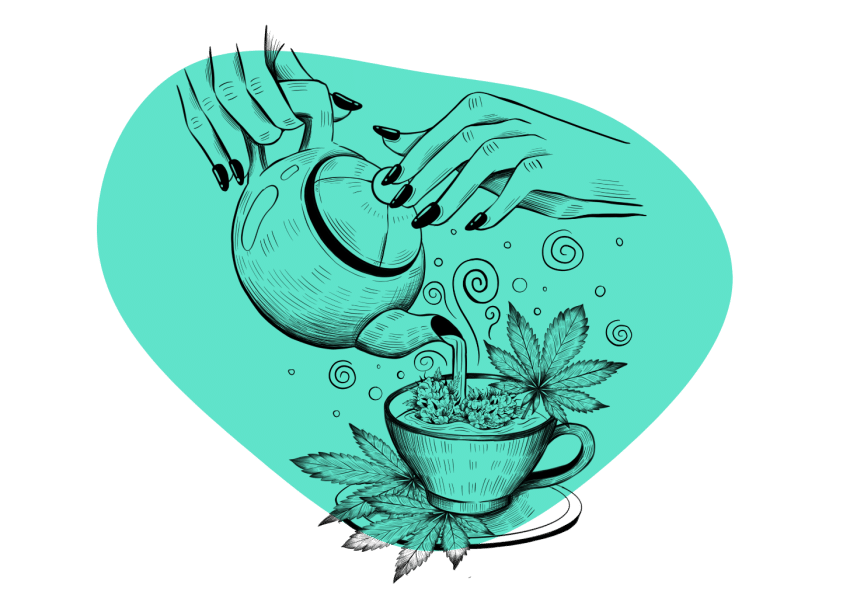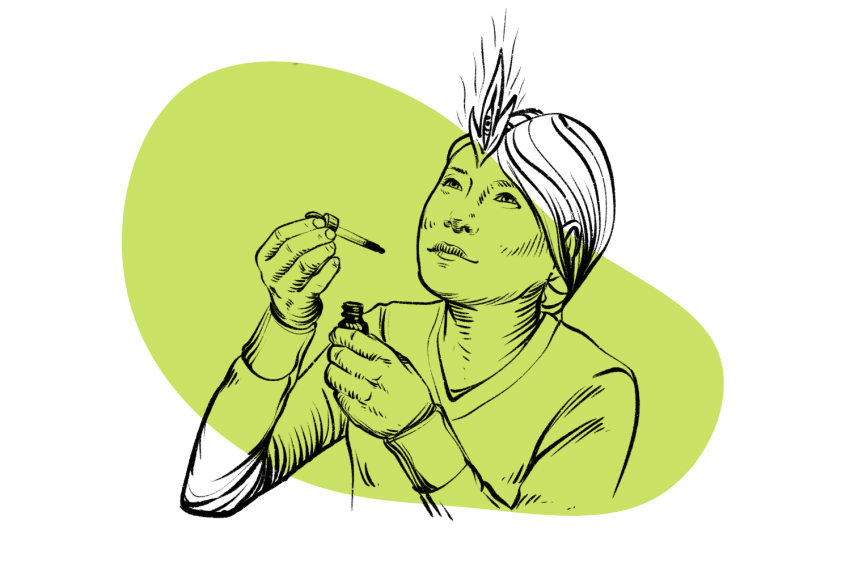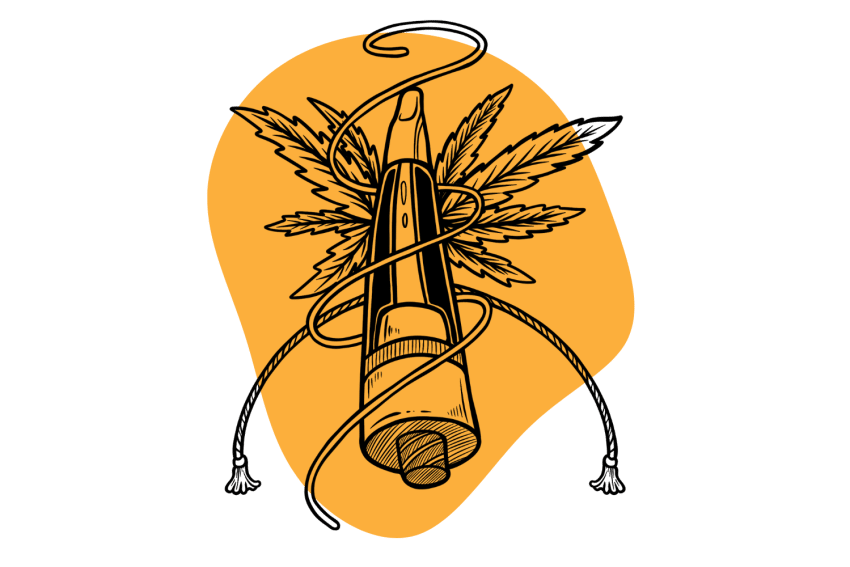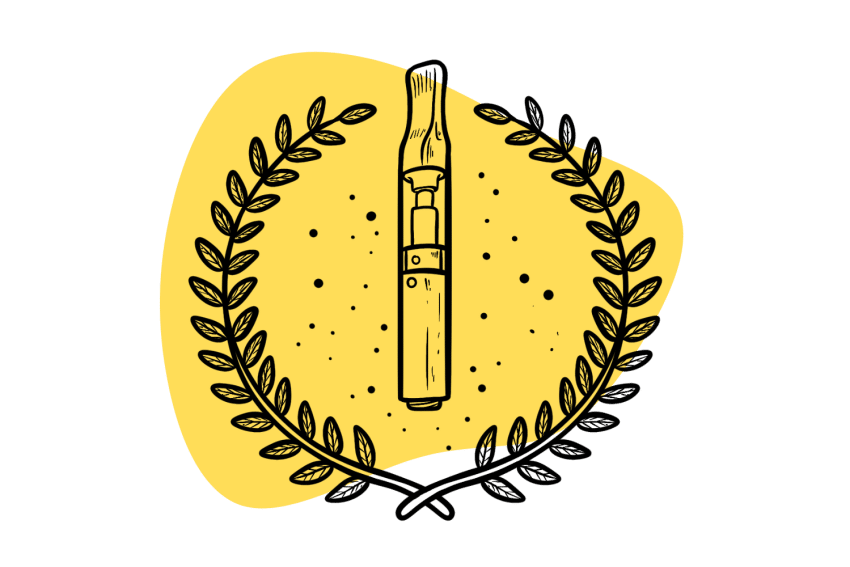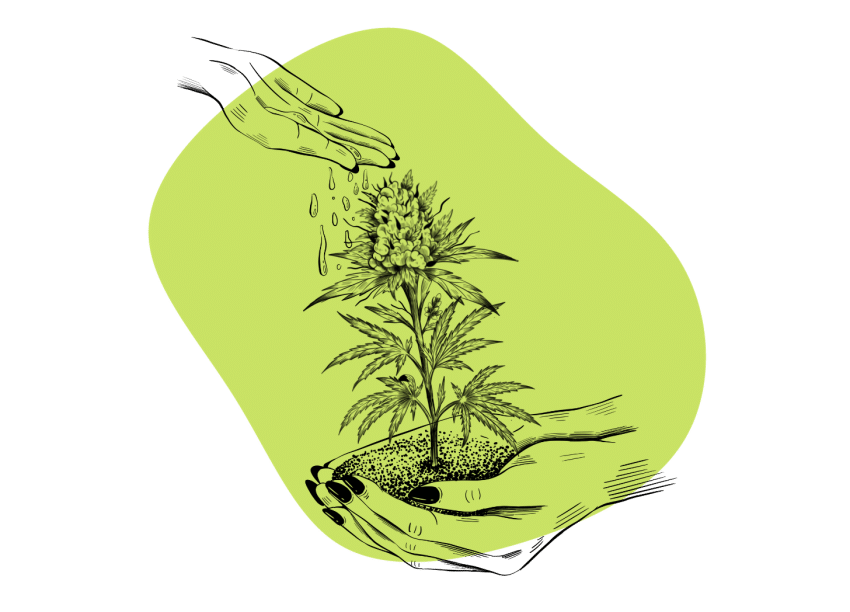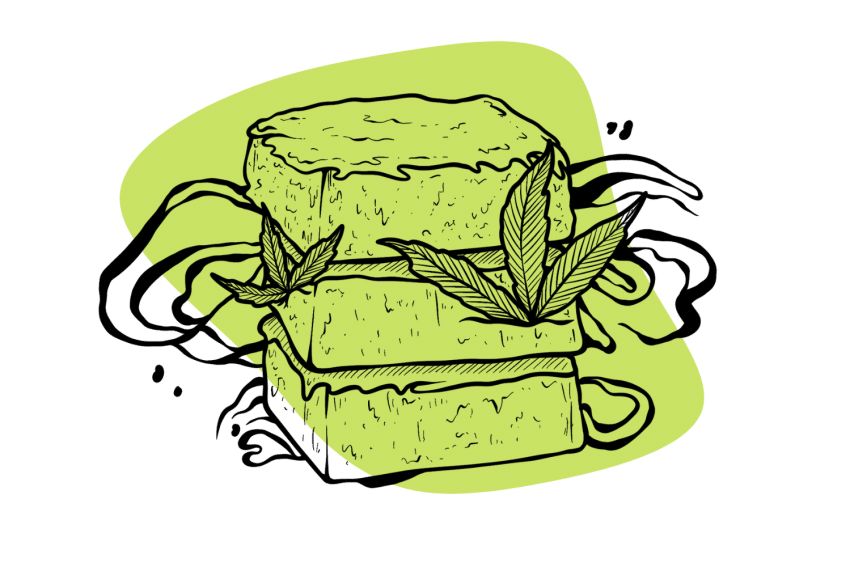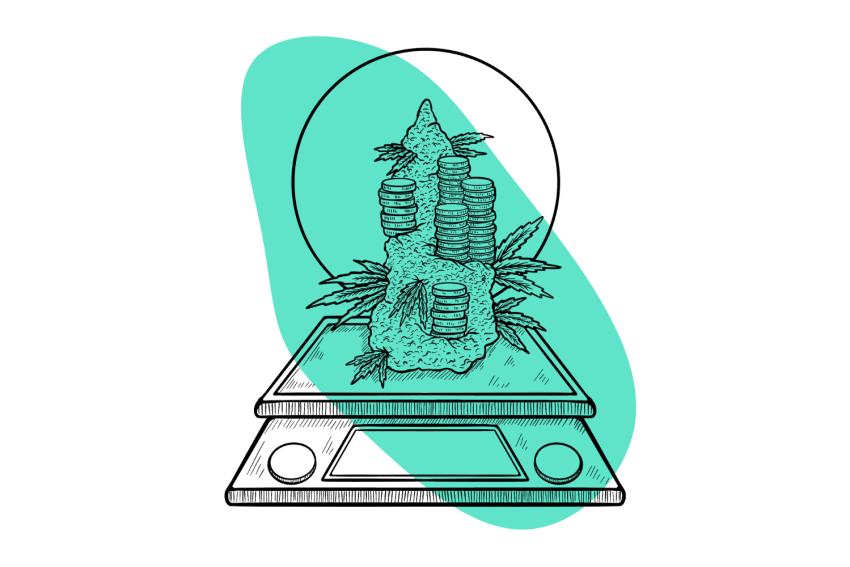THCA (THC-Acid): Legal Loopholes & the Science of THCA
THCA is the common way THC appears in weed, but hemp companies in restrictive states are using new growing and curing techniques to take advantage of loopholes in legislation — here’s everything you need to know about THCA.
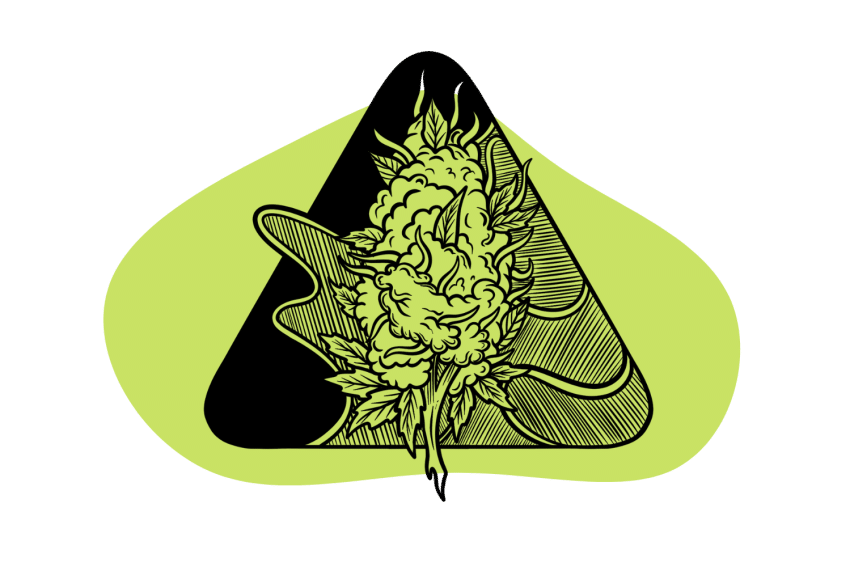
I was walking through hemp shops in Austin about a year ago to see if any had THCA flower — already common in my home state of Tennessee. Most had never heard of the cannabinoid, but one of the budtenders looked perplexingly at me and said, “That would just be weed.”
He wasn’t exactly wrong, tetrahydrocannabinolic acid (THCA) is the precursor to tetrahydrocannabinol (THC) in weed. The non-psychoactive cannabinoid converts to delta-9 THC — the one we all know and love — when exposed to heat (like when smoking or vaping).
So how is THCA flower legal to sell in states like mine where even medical marijuana is illegal? And how is THCA any different from regular weed?
What is THCA?
If you have ever experimented with baking a “special” batch of brownies, you’ve likely come across delta-9-tetrahydrocannabinolic acid (THCA). The cannabinoid can make up as much as 90% of the total THC concentration of cannabis flower [1], converting slowly over time to delta-9-tetrahydrocannabinol.
In this way, it serves a protective quality similar to psilocybin in “magic” mushrooms, which converts to active psilocin over time or through metabolization. THCA converts into all of the other forms of THC that appear in the plant, the bulk of which is delta-9 THC.
THCA’s discovery in 1965 by Professor Friedhelm Korte linked it to hashish [2]. Later, scientists would discover that THCA is an important component of all cannabis products.
The reason it appeared more regularly in the condensed hashish was likely due to the cannabis trichomes’ limited exposure to light and air. This is the number one way to preserve fresh, potent cannabis flowers.
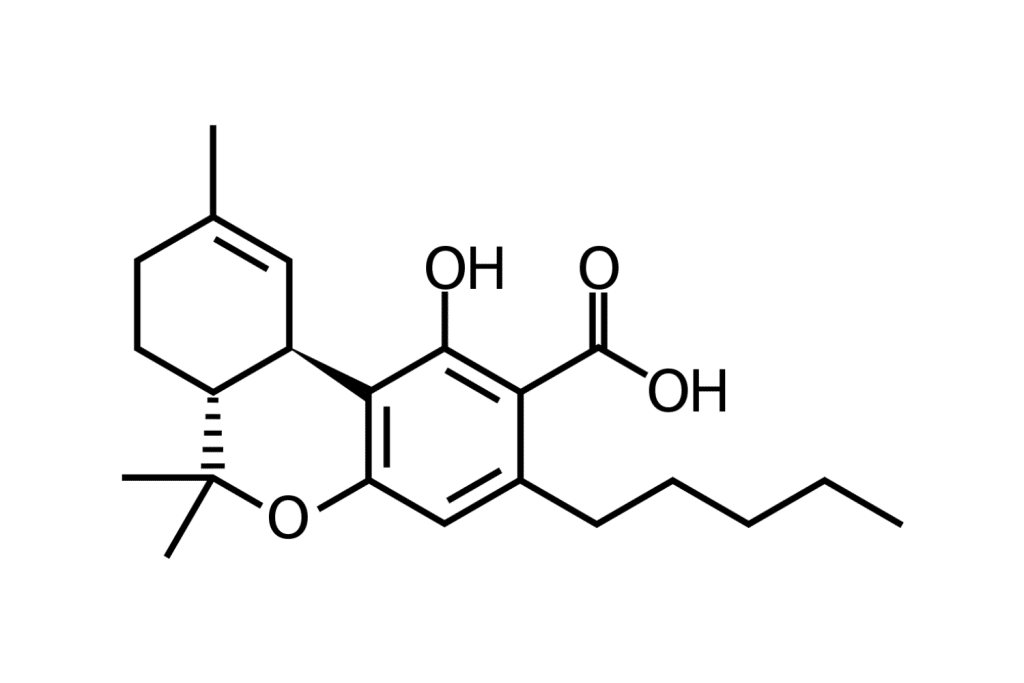
Can THCA Get You High?
THCA isn’t technically capable of making people feel high, which is why eating raw weed wouldn’t have the same effect. However, it converts rapidly with heat — like, say, from a lighter — into the cannabinoid responsible for the effect, delta-9 THC.
Heat kicks off the process of “decarboxylation” — the process of removing a carboxyl group, resulting in the release of carbon dioxide. This is a slow process in proper growing and storage conditions, but high temperatures can speed things up.
THCA typically converts to delta-9 THC at a rate of 30–70%, depending on conditions [1]. When the heat exposure is too high, THCA is more likely to convert to its other potential cannabinoid, cannabinol (CBN).
CBN may have several benefits of its own, but the THC “high” isn’t one of them.
Here are some key findings from a 2023 review of the topic of THCA decarboxylation [3]:
- Decarboxylation doesn’t begin below 180ºC (356ºF)
- Heating at 200ºC (392ºF) for 5 minutes can convert almost 100% of THCA to THC
- Burning cannabis reaches temperatures higher than 700ºC (1,292ºF) and can burn off terpenes along with other minor cannabinoids and convert more and lead to higher levels of CBN
- Under ideal decarboxylation conditions, THCA will result in 12–13% lower potency delta-9 to account for the weight of the carboxyl group it’s shedding
This means that if you wish to determine your THC levels under ideal conditions with THCA, the following formula is how producers do it:
Current delta-9 THC percentage + (THCA percentage x 0.877) = Total THC
Just remember that most situations aren’t the ideal conditions for converting THCA, and the amount will likely be far lower.
How is THCA Legal?
Even though THCA has always been a major component of cannabis, delta-9 THC has been the focus of legislation. Because of this, companies in states with restrictive legislation around marijuana have begun selling hemp THCA flower, claiming it doesn’t break the single regulation of maintaining under 0.03% delta-9 THC.
This has enabled the sale of flower, concentrates, vapes, and more with purity levels comparable to that of any legal cannabis market. Of course, this comes with several considerations and potential legal concerns.
For starters, THCA degrades over time — even in ideal storage conditions — into delta-9 THC. While many consumers might not mind the fact that their product may technically become “illegal” in the months between testing and purchase, it’s important to know.
It is highly unlikely (perhaps even impossible) that any THCA product on the market today is under that 0.03% threshold. One study using cannabis from Austrian drug seizures found that storing cannabis resulted in an 11-12% decrease in THCA and a 1.5–2% increase in delta-9 in a dark storage at room temperature [4].
This was also police evidence, so it was likely in a vacuum-sealed bag and touched or opened very little in that time frame. Regardless of your goals with THCA, it’s still important to know the legalities of your actions beforehand.
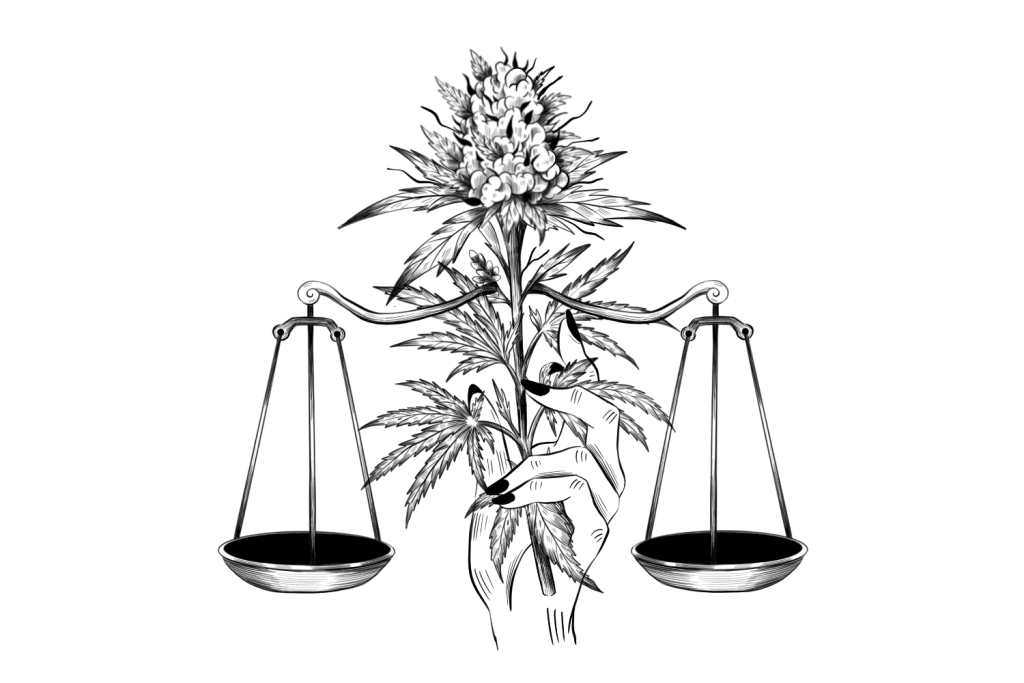
Legal Concerns With THCA
While THCA is legal at a federal level, some states have taken measures to regulate it. Even in states where THCA is legal to buy, there is a considerable risk of getting caught with a product that has become illegal over time, with the THCA converting to THC.
This is a major driver behind the states moving to criminalize THCA and come up with new ways to regulate it. Since hemp is an industry devoid of regulation, there are also some states where you can buy marijuana recreationally that have taken steps to ban or regulate its sale in hemp shops.
Where Is THCA Flower Illegal?
THCA is legal to buy in most states, but don’t expect to buy THCA from hemp shops in the following states:
- Arkansas — In April 2023, Arkansas enacted SB 358 to restrict hemp to .03% of the total of all forms of THC (including THCA). Medical marijuana programs are currently available in this state.
- Hawaii — Legislators did the same in Hawaii in April 2022. Cannabis is not currently legal outside of medical use, but they did decriminalize up to 3 grams (less than 1/8th oz) in 2019
- Idaho — House Bill 126 in 2021 made Idaho the last state in the country to legalize hemp production. Since they were so late to the game, they were able to bake in this regressive gem “including both delta-9 [THC] and … [THCA] evaluated by decarboxylation during analysis.”
- Minnesota — While they recently legalized recreational marijuana, the sale of THCA is not legal due to the unregulated nature of the hemp industry
- Oregon — Similarly, Oregon changed its definition of hemp to include all forms of THC, pushing THCA into the regulated marijuana market.
- Rhode Island — Within the recent framework for a medical marijuana program, Rhode Island defined the total THC of cannabis by multiplying the THCA by .877 and adding it to the THC content.
- Utah — Similar to Rhode Island, Utah includes THCA in its medical marijuana program
- Vermont — Vermont recently passed regulations banning all synthetic forms of THC (like delta-8) and including 87.7% of the THCA content in the total THC percentage restriction for hemp.
How Risky Is Buying THCA?
It would be rare to find a THCA user who would be upset to find an illegal amount of delta-9 THC in their product — but likely not as rare to find a police officer who would. With jail time and steep fines hanging over marijuana charges in several states and countries, it’s important to know the risk you may be taking.
It isn’t uncommon for law enforcement to treat people smoking THCA as if it were marijuana and arrest people for consuming it. Occasionally, these laws stick, but other times, they just cause a massive headache and legal fees.
Several states are moving to prohibit or regulate THCA flower and other legal alternatives to THC. They have some good reasons — we know very little about delta-8 and many other products on the market — but it misses the fact that these products only exist because weed is illegal.
Prohibiting them will merely push the market into a less safe space and force consumers who have come to rely on their legal cannabis relief into the hands of the pharmaceutical industry or criminal acts.
How Is THCA Made?
We tend to view medicinal plants like cannabis as being a storehouse of a single molecule, but they’re constantly changing as they grow. Cannabigerolic Acid (CBG-A) forms in the early plant, eventually converting into the various forms of cannabinol (CBD) and tetrahydrocannabinol (THC) and settling as cannabinol (CBN) [1].
The first conversion splits the “mother” cannabinoid into THCA-A and THCA-B, which the plant stores on the shiny, sticky trichomes jetting off the flower. Only THCA-A can convert through decarboxylation into delta-9 THC — but delta-9 THC itself can convert to CBN if the heat is excessive.
Since oxygen and heat are the main ways THCA converts to its other cannabinoids, hemp producers have innovated growing techniques to ensure the THCA stays locked into its current state. This is a far simpler process than some of the other synthetic workarounds for THC and results in a natural flower without the need for chemicals or synthetic processes.
Additionally, it opens up THCA flower to the same strains as any other form of marijuana since most of them can still thrive in the growing conditions of THCA flower. Along with the preservation of THCA in its current state, this process may be also helpful for preserving terpenes and other components of the plant.
While it started as a loophole for states where marijuana was still illegal, several legal states are starting to toy around with labeling their products with THCA percentages instead of the calculated percentage.
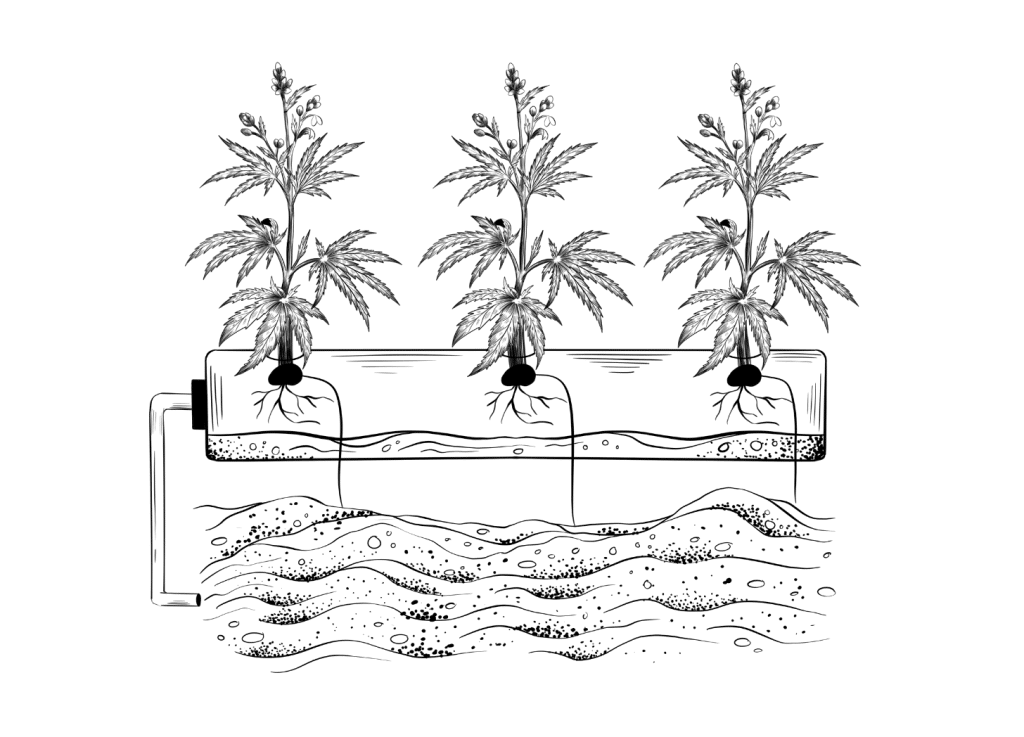
THCA Research: What Are the Potential Benefits of THCA?
Even though most consumers are buying THCA products intending to decarboxylate it in some form, THCA has some potential benefits without the “high.” There have only been a few studies on the interaction between THCA and the endocannabinoid receptors cannabis traditionally interacts with — and what little there is has been inconclusive.
The two main endocannabinoid system receptors are the CB1 and CB2 receptors. This system helps the body to find balance (or homeostasis) in various ways, emotionally, physically, and mentally.
Here’s a quick breakdown of the two roles they serve and where they’re primarily located [5]:
| Receptor | Location | Function |
| CB1 Receptors | Largely in the brain — particularly “the basal ganglia nuclei, hippocampus, cortex, and cerebellum.” Also found in significantly lower concentrations in the heart, prostate, lungs, liver, reproductive organs, and more, with increases in concentration during an active immune response. | Primarily controls “motor function, cognition and memory, and analgesia” (pain relief) Helps to influence GABA (a relaxing neuron) and glutamate (an exciting one) |
| CB2 Receptors | Mostly in organs responsible for immune function like the “spleen, tonsils, [and] thymus” along with the lungs and testes CB2 receptors are “absent from a healthy brain” but can form during some conditions, such as Alzheimer’s | Neuroprotection, anti-inflammation, and other supportive functions |
Depending on the study, THCA may offer a lower [6] or slightly higher affinity [7] for one or both of these receptors. If THCA does have a higher affinity for CB1 receptors than THC, it would have to be in a partial capacity since it doesn’t create cannabimimetic — or cannabis-like — effects even in high doses.
While all of this research is in the starting phase, it shows a tremendous amount of potential for THCA as a beneficial cannabinoid without decarboxylation. However, there are still several areas it may help with. Here’s where the research stands on THCA for various potential treatments:
1. Research on THCA & Inflammation
Pain relief and anti-inflammatory properties are common across several cannabinoids, and THCA is no different.
While THCA won’t cause the same level of pain relief and “mind shift” as THC, research has found that THCA can:
- “Prevent liver fibrogenesis and inflammation in chemically- and obesity-induced liver damage” in mice [8].
- Exhibit anti-arthritis activity and potentially treat “chronic inflammatory diseases such as rheumatoid arthritis [9].”
- Inhibit the production of enzymes responsible for creating prostaglandins, which are “important mediators in the inflammatory process” [10].
The main way THCA can assist with inflammation may lie in its agonism with the peroxisome proliferator-activated receptor gamma (PPARγ). This location may link directly to inflammation response and several other immunity functions we’ll touch on below [11].
2. Research on THCA & Neuroprotection
The strong PPARγ activity THCA exhibits in mice shows that it may be useful for treating and preventing neuroinflammatory conditions [12]. Researchers have shown mice gaining improvements in their motor functions, immune response, and some of the neurological markers for their condition.
While research on mice is far from definitive for humans, it’s a promising start for a potential treatment without impairment. Huntington’s disease and other neurodegenerative conditions can be horrific and bleak — any potential for the treatment of these conditions is exciting at this stage.
3. Research on THCA & Immunity
The endocannabinoid systems help to regulate immunological responses, but the low-affinity THCA likely has for the receptors has led some to suggest it’s useful through different mechanisms [13]. While purely speculative, other studies have found pathways outside of the endocannabinoid system responsible for this, adding credibility to the claim.
In the above study, researchers were able to inhibit the powerful inflammatory agent tumor necrosis factor-alpha (TNF-α). THC, by contrast, elevated the levels of TNF-α, suggesting the two cannabinoids have different actions.
The same reversal of effects took place on phosphatidylcholine-specific phospholipase C activity (PS-PCA). This is another major tool of the immune system, and THCA’s inhibition may be a major contributing factor to its immunoprotective effect.
4. Research on THCA & Nausea
Cannabis of all shapes and sizes has helped with nausea and vomiting throughout the years. THCA may have the unique ability to do so without causing the “high” some can find disorienting.
One rodent study from 2020 found THCA and THC with small amounts of CBDA or CBD, respectively, were both effective for easing nausea [14]. Though THCA shows a higher affinity for CB1 than CB2 receptors in some studies, it doesn’t cause the same effects THC does on the same CB1 receptors.
This is another reason behind questioning whether a different mechanism is behind THCA’s antiemetic qualities.
5. Research on THCA & Obesity
Another major function of PPARγ modulation THCA may influence is metabolism. Research shows that THCA may help regulate obesity, lower body fat, and perhaps even treat metabolic diseases like diabetes [15].
As with the other studies above, this was performed on mice and may or may not translate to humans with as great of a result. Still, weight management and treating metabolic conditions have been elusive to researchers, and this may offer a glimmer of hope.
As time goes on, we’ll have to see if this (and the other potential findings above) pan out for widespread use. What’s certain right now, however, is that THCA has promise.
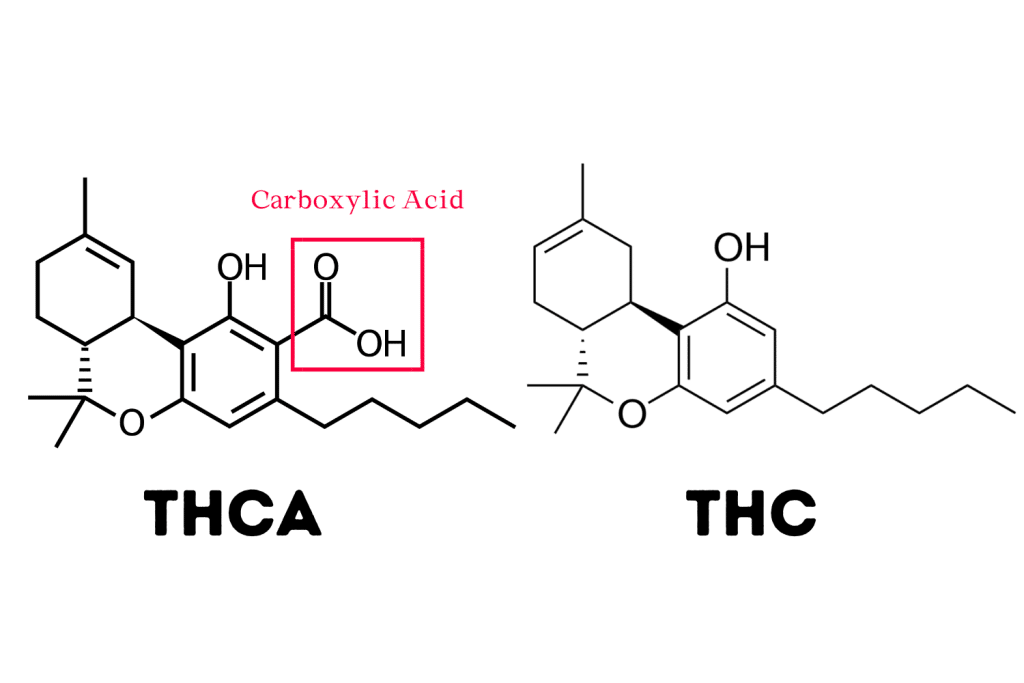
How Does THCA Compare?
THCA converts rapidly to THC, but does that mean it’s completely similar? Here’s how THCA stands up to delta-9 THC and some of the other alternative cannabinoids on the market today:
THCA Vs. Weed: Is There a Difference?
Yes and no — heat can convert THCA to THC, but only at a rate of about 80% (at best). Most of the legal weed on the market today is majority THCA as well — calculating the THCA at a conversion rate of 87.7% unless the label says “THCA” — so they’re very similar.
The main difference between the two comes from the way the producers grow, cure, and store the plant, ensuring none of the THCA turns into THC.
A good THCA flower will follow many of the same rules as good weed:
- Appearance — Good bud is compact with a lot of sticky trichomes bursting off (these are the active components of the plant), is a light or dark green color (sometimes purple), and will have sporadic orange or purple (not brown) “hairs.”
- Smell — Since THCA flower has to go through its growth, curing, and processing in a vacuum, it should preserve terpenes well too. A good THCA flower should be “loud” or very aromatic.
- Smoke — The smoke of a good THCA strain will not overwhelm users and may leave a bit of a lingering “punch” in the lungs for a few minutes after inhaling (coughing is normal, but it shouldn’t taste like ash).
- Flavor — Along with the aromatic smell of THCA flower, users should expect a flavorful smoke with hints of citrus, garlic, lavender, and pepper for the most common terpenes (though others exist as well).
Outside of the preparation and storage of THCA products, there really isn’t much distinguishing the two.
THCA Vs. Delta-8 THC (And Other Synthetic Forms of THC)
Delta-8 THC hit the markets with force a few years ago and opened up the world of THC to restrictive states around the nation. The main difference between THCA and delta-8 — and THCV, delta-7 THC, delta-10 THC, and many others — is the natural availability of THCA.
Delta-8 and many others occur naturally in the cannabis plant but appear in quantities too small to use. Rather, producers isolate CBD from the hemp plant and convert it through a series of processes into delta-8 or other THCs.
Smokable options in this realm typically involve hemp flower sprayed with distillate, which can be harsh to smoke and taste unpleasant. This is to say nothing of how little we know about these new forms of THC, which, while they likely act similarly, may have toxic qualities we have yet to discover.
THCA, by contrast, grows as naturally as any other cannabis plant, and smokable options are available as pure flower, hash, and concentrates. Admittedly, there is still a lot we don’t know about THCA, but since it’s the common component of cannabis, we’ve been studying it one way or another for decades.
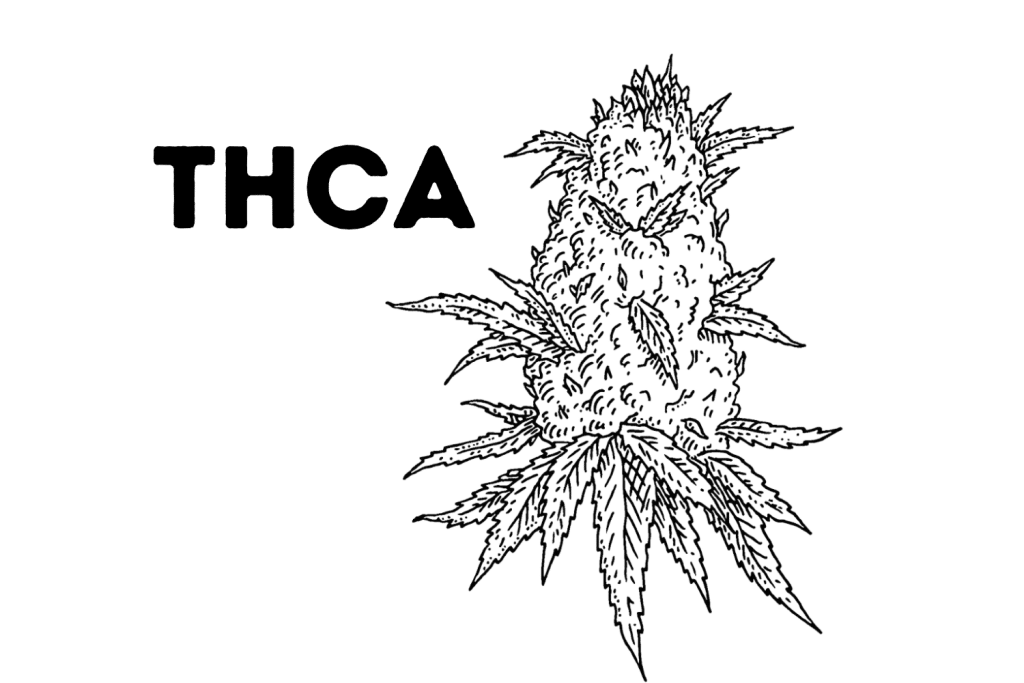
Best Way to Consume THCA
The best way to consume THCA depends on whether you want to experience the THC high and decarboxylate the compound or take THCA on its own. While THCA won’t bring on any level of intoxication, it still has several potential benefits (as we noted above).
1. Convert THCA to THC
THCA converts into THC when exposed to heat and air but can degrade into the non-intoxicating cannabinoid CBN in harsh conditions. While studies have found CBN to be helpful for sleep and other uses, it’s not what most THCA consumers look for.
For this reason, it may be best to invest in a dry herb vaporizer so you can control the temperature and ensure you’re not burning off any THC. One study found vaporizing cannabis could result in 6–14 mg more THC than smoking [16].
As for the correct temperature to set it at, one study using a more advanced vaporization method found 225°C (437°F) had the best effect, converting over 65% of the THCA into THC [17]. Try experimenting around, research the burning points of your strain’s terpenes to try and preserve some of the flavors, and use a fine grind and a tight pack to get more out of your vapor.
This doesn’t mean a joint, bowl, or water pipe won’t be effective — remember, more than 90% of most legal marijuana is THCA [1]. Smoking THCA with your preferred method (or decarboxylating it in the oven for edibles) will work roughly as fine as any other flower you might come across.
However, most legal marijuana options already reduce the THC content from the THCA by 87.7%, so there’s a bit more to lose from smoking a 25% THCA flower than a 25% “THC” option.
2. Use the Raw Flower (Not Decarboxylated)
When it comes to seeking the benefits of THCA itself, smoking and vaporizing are mostly out of the question. The best way to consume THCA is through a product capable of preserving the cannabinoid in its current state, like tinctures or an edible. With edibles, however, be careful when making your own since heat can convert the THCA to THC.
It’s not uncommon to consume raw cannabis flower in smoothies or mixed into food either. Bear in mind that time can convert some of the THCA to THC, but eating raw flower is extremely unlikely to lead to a “high” effect.
Creating your own tinctures, butter, olive oils, and more can also be easy. As with edibles, however, it’s important to remember to not heat the flower too much before doing so.
References
- Moreno-Sanz, G. (2016). Can You Pass the Acid Test? Critical Review and Novel Therapeutic Perspectives of Δ9-Tetrahydrocannabinolic Acid A. Cannabis and Cannabinoid Research, 1(1), 124–130. https://doi.org/10.1089/can.2016.0008
- Korte, F., Hagg, M., & Claussen, U. (1965). Tetrahydrocannabinolcarboxylic Acid, a Component of Hashish. Angewandte Chemie International Edition in English, 4(10), 872–872. https://doi.org/10.1002/anie.196508721
- Malabadi, R. B., Mr, S., Kolkar, K. P., L, L., Chalannavar, R. K., Malabadi, R. B., Mr, S., Kolkar, K. P., L, L., & Chalannavar, R. K. (2023). Quantification of THC levels in different varieties of Cannabis sativa. International Journal of Science and Research Archive, 10(2), Article 2. https://doi.org/10.30574/ijsra.2023.10.2.1029
- Taschwer, M., & Schmid, M. G. (2015). Determination of the relative percentage distribution of THCA and Δ9-THC in herbal cannabis seized in Austria – Impact of different storage temperatures on stability. Forensic Science International, 254, 167–171. https://doi.org/10.1016/j.forsciint.2015.07.019
- Howlett, A. C., & Abood, M. E. (2017). CB1 & CB2 Receptor Pharmacology. Advances in Pharmacology (San Diego, Calif.), 80, 169–206. https://doi.org/10.1016/bs.apha.2017.03.007
- McPartland, J. M., MacDonald, C., Young, M., Grant, P. S., Furkert, D. P., & Glass, M. (2017). Affinity and Efficacy Studies of Tetrahydrocannabinolic Acid A at Cannabinoid Receptor Types One and Two. Cannabis and Cannabinoid Research, 2(1), 87–95. https://doi.org/10.1089/can.2016.0032
- Rosenthaler, S., Pöhn, B., Kolmanz, C., Huu, C. N., Krewenka, C., Huber, A., Kranner, B., Rausch, W.-D., & Moldzio, R. (2014). Differences in receptor binding affinity of several phytocannabinoids do not explain their effects on neural cell cultures. Neurotoxicology and Teratology, 46, 49–56. https://doi.org/10.1016/j.ntt.2014.09.003
- Carmona-Hidalgo, B., González-Mariscal, I., García-Martín, A., Prados, M. E., Ruiz-Pino, F., Appendino, G., Tena-Sempere, M., & Muñoz, E. (2021). Δ9-Tetrahydrocannabinolic acid markedly alleviates liver fibrosis and inflammation in mice. Phytomedicine, 81, 153426. https://doi.org/10.1016/j.phymed.2020.153426
- Palomares, B., Garrido-Rodriguez, M., Gonzalo-Consuegra, C., Gómez-Cañas, M., Saen-oon, S., Soliva, R., Collado, J. A., Fernández-Ruiz, J., Morello, G., Calzado, M. A., Appendino, G., & Muñoz, E. (2020). Δ9-Tetrahydrocannabinolic acid alleviates collagen-induced arthritis: Role of PPARγ and CB1 receptors. British Journal of Pharmacology, 177(17), 4034–4054. https://doi.org/10.1111/bph.15155
- Ruhaak, L. R., Felth, J., Karlsson, P. C., Rafter, J. J., Verpoorte, R., & Bohlin, L. (2011). Evaluation of the Cyclooxygenase Inhibiting Effects of Six Major Cannabinoids Isolated from Cannabis sativa. Biological and Pharmaceutical Bulletin, 34(5), 774–778. https://doi.org/10.1248/bpb.34.774
- Martin, H. (2010). Role of PPAR-gamma in inflammation. Prospects for therapeutic intervention by food components. Mutation Research, 690(1–2), 57–63. https://doi.org/10.1016/j.mrfmmm.2009.09.009
- Nadal, X., del Río, C., Casano, S., Palomares, B., Ferreiro‐Vera, C., Navarrete, C., Sánchez‐Carnerero, C., Cantarero, I., Bellido, M. L., Meyer, S., Morello, G., Appendino, G., & Muñoz, E. (2017). Tetrahydrocannabinolic acid is a potent PPARγ agonist with neuroprotective activity. British Journal of Pharmacology, 174(23), 4263–4276. https://doi.org/10.1111/bph.14019
- Verhoeckx, K. C. M., Korthout, H. A. A. J., van Meeteren-Kreikamp, A. P., Ehlert, K. A., Wang, M., van der Greef, J., Rodenburg, R. J. T., & Witkamp, R. F. (2006). Unheated Cannabis sativa extracts and its major compound, THC-acid, have potential immuno-modulating properties not mediated by CB1 and CB2 receptor-coupled pathways. International Immunopharmacology, 6(4), 656–665. https://doi.org/10.1016/j.intimp.2005.10.002
- Rock, E. M., Sullivan, M. T., Pravato, S., Pratt, M., Limebeer, C. L., & Parker, L. A. (2020). Effect of combined doses of Δ9-tetrahydrocannabinol and cannabidiol or tetrahydrocannabinolic acid and cannabidiolic acid on acute nausea in male Sprague-Dawley rats. Psychopharmacology, 237(3), 901–914. https://doi.org/10.1007/s00213-019-05428-4
- Palomares, B., Ruiz-Pino, F., Garrido-Rodriguez, M., Eugenia Prados, M., Sánchez-Garrido, M. A., Velasco, I., Vazquez, M. J., Nadal, X., Ferreiro-Vera, C., Morrugares, R., Appendino, G., Calzado, M. A., Tena-Sempere, M., & Muñoz, E. (2020). Tetrahydrocannabinolic acid A (THCA-A) reduces adiposity and prevents metabolic disease caused by diet-induced obesity. Biochemical Pharmacology, 171, 113693. https://doi.org/10.1016/j.bcp.2019.113693
- Fischedick, J., Van Der Kooy, F., & Verpoorte, R. (2010). Cannabinoid receptor 1 binding activity and quantitative analysis of Cannabis sativa L. smoke and vapor. Chemical & Pharmaceutical Bulletin, 58(2), 201–207. https://doi.org/10.1248/cpb.58.201
- Dussy, F. E., Hamberg, C., Luginbühl, M., Schwerzmann, T., & Briellmann, T. A. (2005). Isolation of Delta9-THCA-A from hemp and analytical aspects concerning the determination of Delta9-THC in cannabis products. Forensic Science International, 149(1), 3–10. https://doi.org/10.1016/j.forsciint.2004.05.015

